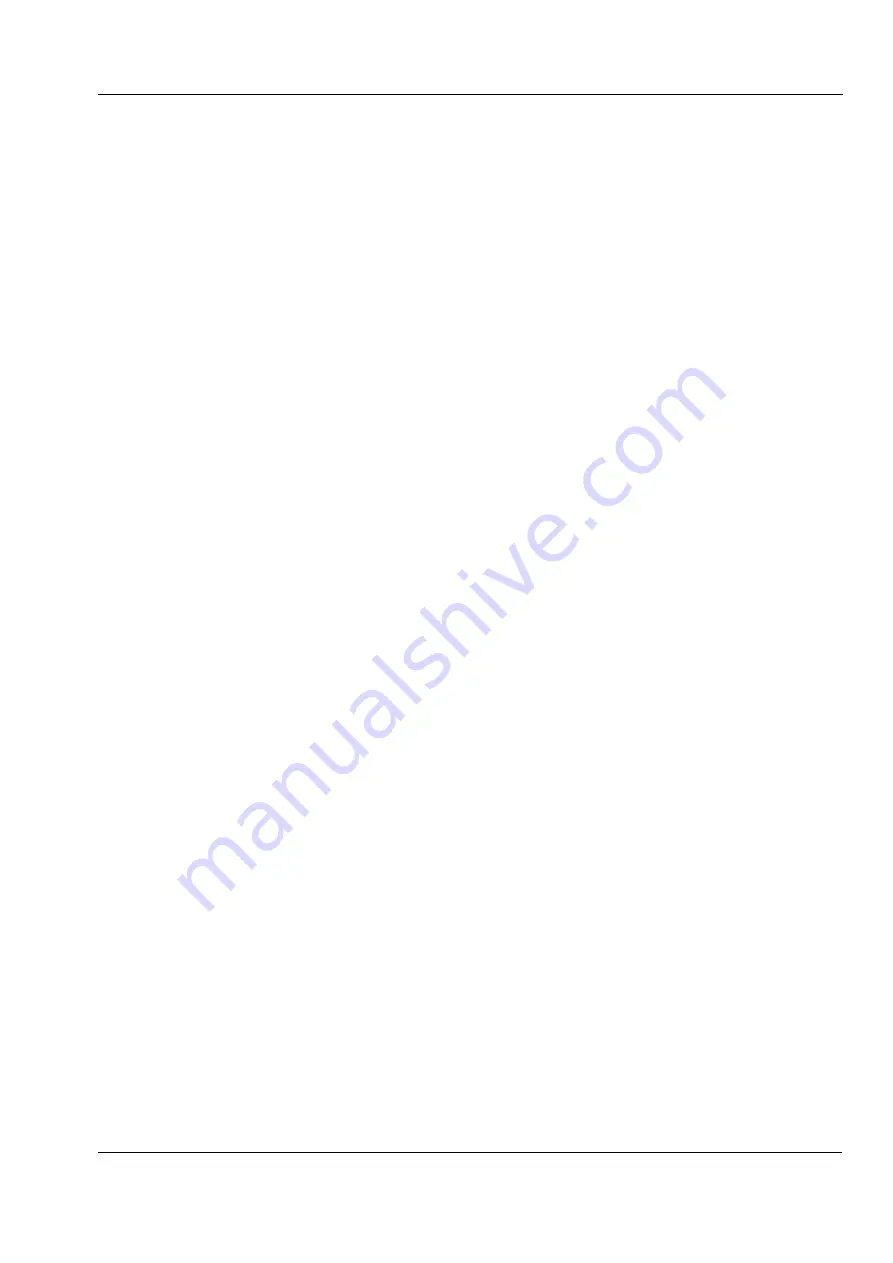
Section 220-0090
SM 1765 2-99
3
Steering System - Steering Valve
SPOOL IN POSITION
Numbers in parentheses refer to Fig. 2.
Movement of spool (47) inward in the control valve
causes pressure to increase in the control valve. Oil
travels through the centre passage and enters lock
plunger (18) where it forces poppets (17) outward in
the lock plunger. Oil flows through passage (A), lock
plunger (18), around poppet (17) and back out the lock
plunger to port ‘A'. The oil then flows to the flow
reversing valve and the steering cylinder. As the
cylinder piston is forced outward, oil in the opposite
steering cylinder is forced out of the cylinder. Oil from
the steering cylinder enters the steering valve at port
‘B', enters lock plunger (18), flows around poppet (17)
and enters passage (B). Oil flows around spool (47)
and into the return-to-tank passage where it returns to
the tank through return-to-tank port. Centering spring
(42) returns the spool (47) to ‘Neutral’ position when
the steering wheel is straightened out.
SPOOL OUT POSITION
Numbers in parentheses refer to Fig. 2.
When spool (47) is moved outward in the steering
valve, oil pressure builds up and the pressure in the
centre passages causes poppets (17) to move
outward in lock plunger (18). Oil flows through
passage (B) into lock plunger (18), around poppet (17)
and out port ‘B’ to the flow reversing valve then to the
steering cylinder. As the cylinder piston is forced
outward, the oil in the opposite cylinder is forced out of
the cylinder by the inward movement of the piston rod.
This oil enters port ‘A', travels around poppet (17) in
lock plunger (18) and enters the return-to-tank
passage. The oil exits the steering valve at the return-
to-tank port, then returns to the hydraulic oil tank.
Returning the steering wheel to straight ahead
position, allows centering spring (42) to bring spool
(47) to the ‘Neutral’ position.
CROSS-OVER RELIEF VALVE
ASSEMBLIES
Numbers in parentheses refer to Fig. 2.
Rough steering due to road shocks is prevented by
cross-over relief valve (4) assemblies. A wheel hitting
an obstruction or chuck hole will cause one piston rod
in a steering cylinder to move outward and the piston
rod in the other steering cylinder to move inward. The
piston rod moving outward creates a void in the
steering cylinder and the piston rod moving inward
creates a high pressure on the oil in the cylinder. To
relieve this situation the cross-over relief valve
assemblies add to oil in a steering cylinder or relieve
excess pressure in the cylinder.
If the steering cylinder connected to port ‘B’ receives a
road shock, oil is forced out of the cylinder and
pressure builds up at port ‘B'. Oil travels from port ‘B’
to the cross-over relief valve where excess oil
pressure forces poppet (54) off its seat, allowing oil to
flow through the cross-over relief valve and into
passage (B) where the oil joins with the other oil and
returns to the hydraulic oil tank through return-to-tank
port. The steering cylinder connected to port ‘A’ begins
to cavitate because the piston rod is being forced
outward in the cylinder. This drop in pressure behind
poppet (17) allows oil pressure in passage (A) to push
poppet (17) back. Oil flows from passage (A) past
poppet (17) to port ‘A'. The oil flows out of port ‘A’ and
into the steering cylinder to fill the cavity left by the
steering cylinder piston rod moving outward in the
cylinder.
Should the other steering cylinder receive the shock,
the above actions would take place but in reverse.
MAIN RELIEF VALVE
Numbers in parentheses refer to Fig. 2.
Oil pressure in the steering valve is normally 134 bar
(1 950 Ibf/in
2
). When oil pressure rises above the
setting, oil in the centre passage forces check (31) off
its seat. Movement of check (31) compresses oil
behind the check, causing poppet (27) to be unseated
and allow excess oil behind the check to flow into the
return-to-tank passage and then to the hydraulic oil
tank through return-to-tank port. Unseating check (31)
allows excess oil to flow through seat (32) and unseat
check (33). Excess oil flows around check (33) and
back to the hydraulic oil tank through return-to-tank
passage and return-to-tank port. As pressure returns
to normal, the springs behind checks (31 & 33) seat
the checks and a spring behind poppet (27) returns
the poppet to its seated position.
Summary of Contents for TS14G
Page 2: ...Courtesy of Machine Market...
Page 4: ...THIS PAGE IS INTENTIONALLY LEFT BLANK Courtesy of Machine Market...
Page 6: ...THIS PAGE IS INTENTIONALLY LEFT BLANK Courtesy of Machine Market...
Page 12: ...Courtesy of Machine Market...
Page 26: ...Courtesy of Machine Market...
Page 40: ...Courtesy of Machine Market...
Page 52: ...Courtesy of Machine Market...
Page 72: ...Courtesy of Machine Market...
Page 120: ...Courtesy of Machine Market...
Page 134: ...Courtesy of Machine Market...
Page 156: ...Courtesy of Machine Market...
Page 176: ...Courtesy of Machine Market...
Page 186: ...Courtesy of Machine Market...
Page 194: ...Courtesy of Machine Market...
Page 224: ...Courtesy of Machine Market...
Page 228: ...Courtesy of Machine Market...
Page 264: ...Courtesy of Machine Market...
Page 274: ...Courtesy of Machine Market...
Page 278: ...Courtesy of Machine Market...
Page 282: ...Courtesy of Machine Market...
Page 288: ...Courtesy of Machine Market...
Page 300: ...Courtesy of Machine Market...
Page 306: ...Courtesy of Machine Market...
Page 314: ...Courtesy of Machine Market...
Page 328: ...Courtesy of Machine Market...
Page 336: ...Courtesy of Machine Market...
Page 342: ...Courtesy of Machine Market...
Page 354: ...Courtesy of Machine Market...
Page 366: ...Courtesy of Machine Market...






























